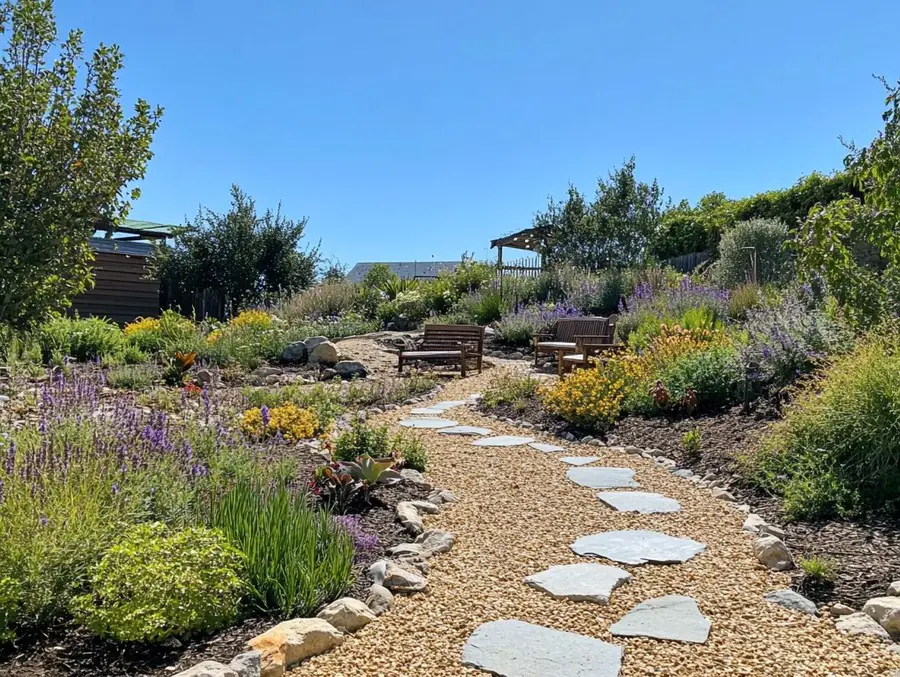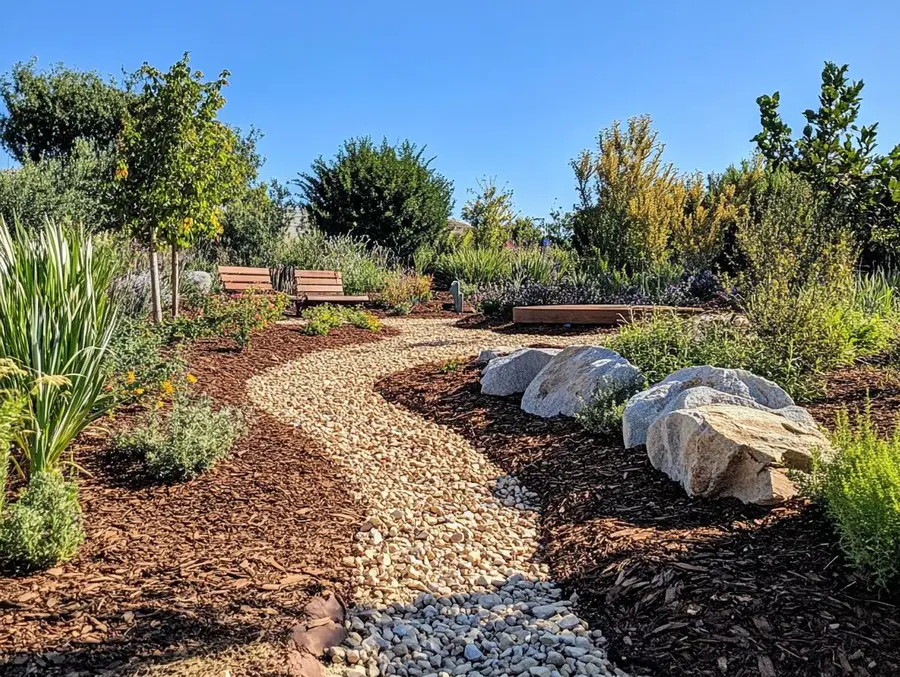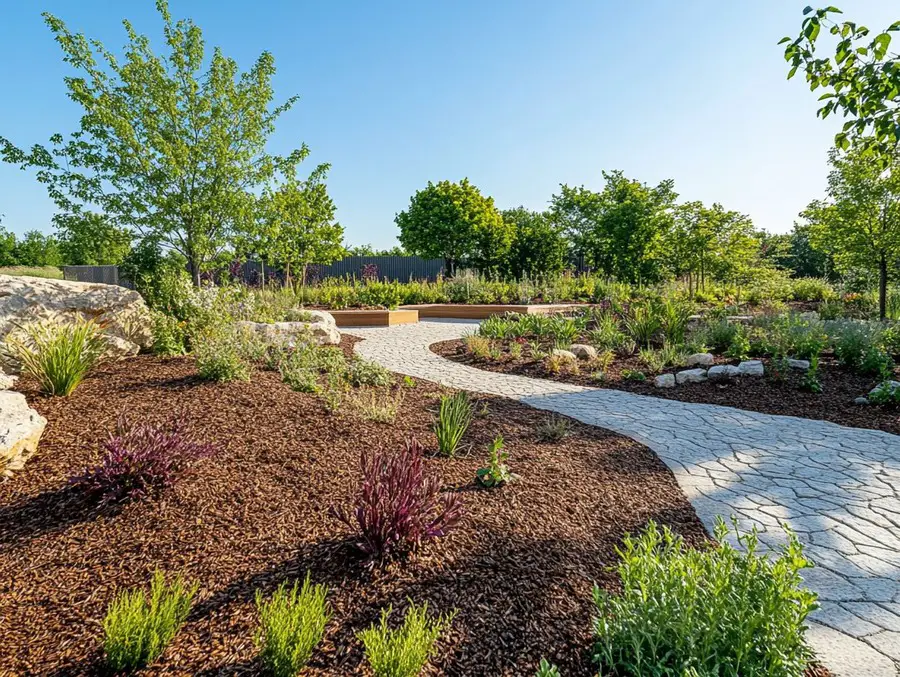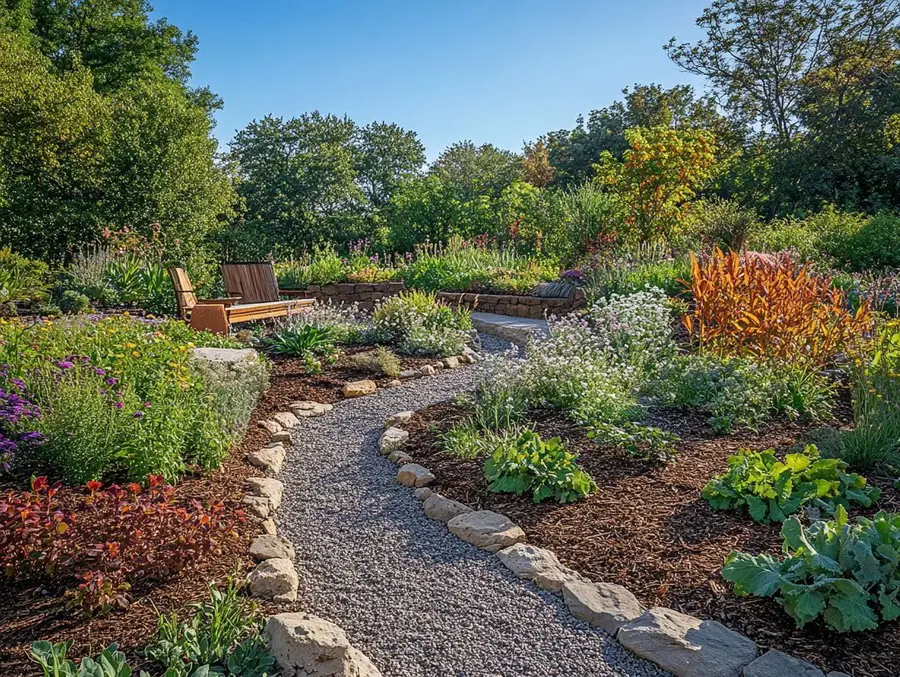
The history of xeriscaping explores how water-wise landscaping began! Discover its roots, evolution, and impact on creating sustainable, drought-friendly gardens.
In a world where water scarcity and climate change are making headlines, xeriscaping stands out as a smart landscaping choice that combines beauty with practicality.
This article takes you through the origins of xeriscaping, tracing its historical roots and sharing some early examples of water-saving practices. You’ll see how these techniques have evolved over time, explore the many environmental and economic benefits of drought-tolerant landscaping, and discover practical steps you can take to implement them in your own space.
Think about the future of xeriscaping and what it could mean for your community. Join in as we uncover the transformative power of xeriscaping in creating resilient, eco-friendly environments.
What is the History of Xeriscaping?

Xeriscaping is a landscaping approach that helps you cut down on water usage while making your outdoor space look fantastic, especially if you’re in a dry area.
This eco-friendly method uses drought-resistant plants and smart irrigation techniques, all while championing sustainable gardening practices that blend environmental responsibility with beautiful design.
By prioritizing soil health and native plants, xeriscaping can really help you lower your water consumption and boost biodiversity in urban settings. It’s a win-win for anyone looking to garden responsibly and elevate their landscape architecture.
Origins of Xeriscaping
The origins of xeriscaping can be traced back to ancient agricultural practices, where finding solutions for water scarcity was crucial for survival in dry climates.
Early civilizations got creative with their landscaping techniques, focusing on water conservation by using native plants and sustainable land use strategies. This laid the groundwork for the modern principles of xeriscaping.
By diving into the evolution of landscaping design, you can really appreciate how historical drought management practices have influenced today’s approach to sustainable gardening and maintaining ecological balance.
Early Examples of Water-Saving Landscaping
You can trace early examples of water-saving landscaping back to ancient civilizations that really knew how to use drought-resistant plants and sustainable gardening techniques to thrive in tough climates. These cultures often leaned on native plants that were perfectly suited to their local conditions and used clever irrigation methods to make the most of their water resources.
When you look at these historical landscaping practices, it’s clear how eco-conscious gardening has evolved over time and how it influences modern xeriscaping efforts.
For instance, the indigenous peoples of the American Southwest developed sophisticated dry farming systems and made the most of native plants like cacti and succulents, which need very little water. Similarly, the ancient Persians created qanats—underground channels that transported water from the mountains to their dry fields, showing off their innovative irrigation techniques.
Today, with the growing demand for sustainable practices, you can see how these historical methods inspire contemporary gardeners. By embracing native landscaping and modern xeriscaping principles, you’re optimizing water efficiency, cutting down on maintenance costs, and promoting biodiversity in your garden.
Evolution of Xeriscaping Techniques
The evolution of xeriscaping techniques has really changed how you approach landscape design. It brings together horticultural practices and innovative methods to create sustainable, drought-tolerant gardens.
With growing awareness of water scarcity, modern xeriscaping embraces a bunch of effective strategies, like rainwater harvesting and choosing water-efficient plants, ensuring your outdoor spaces stay healthy and vibrant even when the climate gets tough.
This shift toward environmentally sustainable practices not only helps you conserve precious resources but also boosts the beauty of your surroundings.
Advancements in Drought-Tolerant Landscaping

Recent advancements in drought-tolerant landscaping have really ramped up the use of xeriscaping innovations, making sustainable landscape design more popular than ever. These innovations include incorporating water-efficient plants, improving irrigation techniques, and gaining a better understanding of microclimates and how they affect plant diversity.
When you focus on selecting native and drought-resistant species, you’re not just beautifying your outdoor spaces; you’re also doing your part for ecological balance by supporting local wildlife. Plus, new technologies like smart irrigation systems that use sensors to monitor soil moisture levels have come onto the scene, helping you use water more efficiently.
Landscape designers are getting creative with rain gardens and permeable hardscapes, which capture and retain water runoff, showcasing a clear commitment to sustainability. As awareness of climate change and water scarcity increases, embracing these modern approaches becomes essential for creating vibrant landscapes while conserving those precious resources.
Benefits of Xeriscaping
The benefits of xeriscaping go well beyond just looking good; it has a real positive impact on the environment by conserving water and improving ecological balance.
When you embrace xeriscape principles, you can cut down on water usage while still creating a lively landscape that encourages biodiversity and helps preserve habitats. This approach not only boosts sustainability but also offers some economic perks.
By saving on water costs, you can enjoy long-term savings for yourself and your community.
Environmental and Economic Advantages
Xeriscaping offers a ton of environmental and economic benefits, making it a smart choice if you’re interested in sustainable landscaping. On the environmental side, it promotes soil health, conserves water, and encourages biodiversity by using native plants and xerophytes.
Economically, you can save on your water bills and cut down on maintenance costs, all thanks to the efficient water-saving practices that come with xeriscaping.
When you design a xeriscaped garden with drought-resistant plants, you not only need to water less often but also reduce your reliance on chemical fertilizers and pesticides, which can harm local ecosystems. The initial investment in xeriscaping usually leads to long-term savings since these types of landscapes generally require less upkeep. This means you’ll spend fewer hours on lawn care and gardening services.
For instance, a well-planned xeriscape might use organic mulch to help regulate soil temperature and moisture, boosting its sustainability even more. By adopting xeriscaping practices, you not only secure some financial benefits but also help create a more eco-friendly community by conserving vital resources.
Implementing Xeriscaping
Implementing xeriscaping in your landscape is all about a few key steps that help you use water efficiently and encourage optimal plant growth, all while making your outdoor space look great.
First, dive into some solid garden planning that takes into account your local climate and soil conditions.
Then, choose your plants wisely, focusing on drought-resistant species and native plants that thrive in your area.
Don’t forget to incorporate some smart irrigation techniques, like drip systems and rainwater harvesting, into your xeriscape garden. This way, you’ll maximize water conservation and keep maintenance to a minimum over time.
Steps and Considerations for Creating a Xeriscape

Creating a xeriscape involves some essential steps that put soil conservation, erosion control, and smart landscape planning front and center to help you achieve a sustainable and beautiful garden.
Start by checking out your site’s microclimates and soil health; this will guide your plant choices and irrigation methods. When you design your xeriscape, think about adding mulch and other landscaping materials that help retain moisture and reduce erosion, making sure your garden stays vibrant and resilient against the elements.
To get your xeriscape thriving, you’ll want to pick drought-tolerant plants that can handle your local climate, which means less need for extra watering. Watch how you layer your plants, grouping those with similar water needs to make the most of your resources.
Implementing erosion control measures, like terracing or planting ground cover, will help keep your soil intact and prevent runoff.
Don’t forget to regularly monitor soil moisture levels; this will help you fine-tune your irrigation strategies and ensure your xeriscape remains healthy and beautiful while making a positive impact on the environment.
Future of Xeriscaping
The future of xeriscaping looks bright for you, especially as landscaping trends are starting to focus more on climate adaptation and sustainable urban development to tackle water scarcity challenges.
With everyone becoming more aware of environmental sustainability, you’ll notice that more communities are jumping on the xeriscaping bandwagon, embracing eco-friendly practices that boost biodiversity and promote ecological landscaping.
As new techniques and materials keep popping up, the potential for xeriscaping to transform your outdoor spaces has never been more exciting.
Predictions for the Growth and Impact of Xeriscaping
Predictions about the growth and impact of xeriscaping suggest that you’re going to see a big shift in how we tackle sustainable landscape design, especially with water scarcity and environmental challenges on the rise. As more folks recognize the importance of gardening education and community involvement in promoting xeriscaping, you can expect a surge in the adoption of water-efficient plants and creative landscaping solutions.
This collective effort towards responsible gardening won’t just change individual gardens; it’ll also play a role in larger ecological restoration initiatives.
These changes are essential as communities work to reduce water consumption and boost biodiversity. By understanding how to select plants that thrive in dry conditions and incorporating native species that support local wildlife, you can help create vibrant, low-maintenance landscapes.
Participating in workshops and community gardens focused on xeriscaping can give the power to you to take action, share knowledge, and inspire those around you. By emphasizing sustainable practices, you’ll contribute to a more environmentally conscious culture, allowing cities to adapt better to climate variability and ultimately paving the way for resilient ecosystems.
Frequently Asked Questions
What is xeriscaping?
Xeriscaping is a type of landscaping that conserves water by using drought-resistant plants and techniques to reduce the need for irrigation.
When did xeriscaping become popular?
Xeriscaping gained popularity in the 1980s during a severe drought in the southwestern United States.
Who is credited with coining the term xeriscaping?
The term “xeriscaping” was first used in the 1980s by Denver Water, a water utility company in Colorado.
Why was xeriscaping developed?
Xeriscaping was developed as a response to water shortages and the need to conserve water in dry climates.
What are the benefits of xeriscaping?
Xeriscaping not only conserves water, but also reduces maintenance and fertilization costs, and can increase property value.
Is xeriscaping only used in dry climates?
While xeriscaping is most commonly used in dry climates, the principles and techniques can be applied in any region to reduce water usage and maintenance.
Benefits of Xeriscaping: Save Water, Time, and Money
What is xeriscaping? A beginner’s guide to drought-tolerant landscaping
